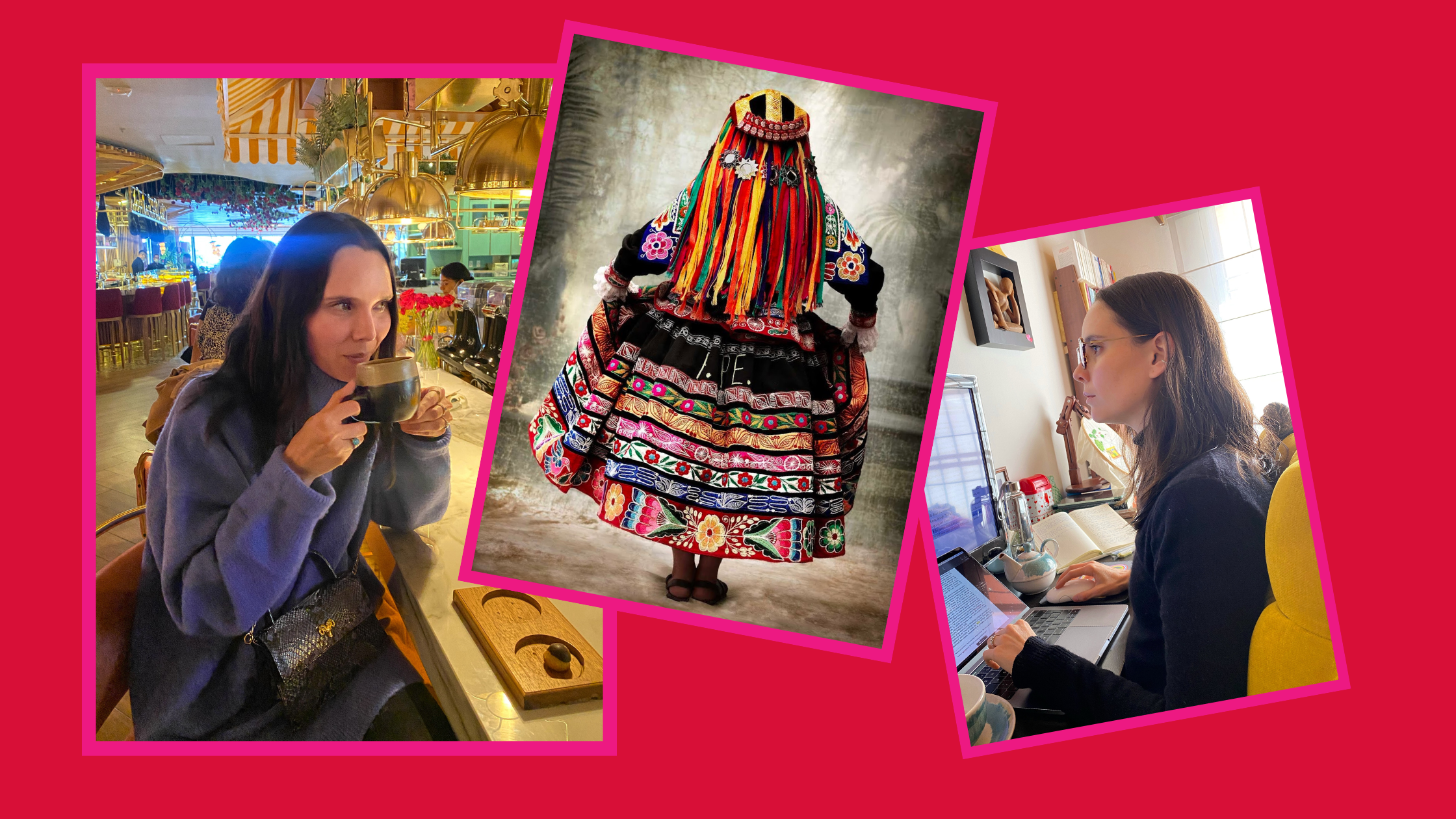Powered by RedCircle
Confession: I’ve been trying to avoid thinking too much about fashion recently. I think this is mostly because I’m still recovering from the burnout caused by writing my dissertation and being a full-time professor (and all the “ghost” and emotional labor that both jobs entail) at the same time.
It’s not like I don’t want to research or think critically about fashion anymore. It’s more that I’ve finally found the time to delve a bit more into a subject that I’m still indebted with, after devouring as many readings as I could on the subject for my Ph.D. qualifying exams but only writing briefly about it in my dissertation.
The mysterious subject is Indigenous art of the “Americas”—or what I’d rather call Turtle Island and Abya Yala.
So, as I try to take a break from fashion in the last couple of months, I’ve spent more time reading, learning, and thinking about Indigenous arts, including but definitely not limited to textiles and fashion. I’ve also started to work on a couple of related—and very exciting—projects. One of them attempts to lay out what we can learn from Indigenous methodologies to research Indigenous fashion.
In this new exploration, I have inevitably stumbled upon some of my internal debates about “decolonization,” which I had involuntarily silenced to avoid obsessing too much about the many contradictions I’ve been seeing around the term for a couple of years now. To be honest, that might have been a sort of survival strategy as I tried to focus on finishing my dissertation. But now that it’s over, I finally have some brainwidth to face the dilemma.
The question that inspired this post is, then: Can actually decolonize the arts—fashion included?
Put very shortly, decolonization aims to dismantle the power structures that we have inherited from political, economic, and sociocultural imperialism and colonization around the globe. Rather than an end goal, decolonization is a process. And, as such, it requires us to adopt different strategies to slowly reshape colonialist power structures.
Some strategies for decolonization seem easy and straightforward. (I wrote more about them in an Instagram post last week.) But they go against some of the most basic dynamics within the art world—including the art market and scholarship about the arts—which is why they end up being quite difficult to adopt.
Yet decolonization has become much of a buzzword lately.
And decoloniality has become trendy—in fashion and art more generally—as evidenced in the increased use of the word in open-ended conversations, scholarly publications, and the popular media.
What’s frustrating is that the rising popularity of the word has not always coincided with the adoption of a decolonial paradigm that helps us reframe how we live and relate to other human beings, other animals, and the planet.
I’ve seen the contradictions between claims to take a decolonial approach and actually putting strategies for decolonization into practice in recent scholarly works that I have reviewed. For example, a book proposal claimed to offer a decolonial view of Latin American fashion without even establishing the positionality of mostly white(ned) scholars based in the United States. A recent exhibition claimed to adopt a decentering approach to fashion in Latin America without delving into the complex, colonialist dynamics that still relegate most Indigenous creatives to the role of “artisans” rather than “designers”. And a design project that claimed to take a decolonial framework was advanced by a brand that took a Quechua word as its name with the intent to “honor” the Indigenous peoples of a territory where Quechua only arrived with the Spanish colonization.
Am I being too dramatic or is this really frustrating?
Maybe that’s why other scholars, especially Indigenous researchers, have rejected the word “decolonization” and, instead, have proposed to adopt terms like “Indigenization” or “unsettling.” But I think the issue goes far beyond the word choice. To borrow the words of art historian Kathryn Bunn-Marcuse:
While terminology is always changing, the original issues remain. Whether we call it “decolonizing…” or “Indigenizing…” or “unsettling our practices,” acknowledging colonial histories and centering Native and First Nation community priorities, people, and voices within institutions is key.
Bunn-Marcuse 2020, p. 13
When it comes to Indigenous visual and material cultures—including art and fashion—we must, then, change the ways in which we relate with Indigenous people themselves and allow them to show us the path to decolonization.
This requires a rather revolutionary process through which we can unlearn much of what we know about research, writing, and, more broadly, the generation of knowledge. And this, of course, goes well beyond simply claiming to take a decolonial stance and citing some of the most famous authors of decoloniality.
The question is: Are we ready to actively listen to Indigenous and other people that have been historically marginalized, unlearn pretty much everything we know, and let them lead the way towards recentering our approaches to art and fashion?
Quite honestly, I have my reservations.
What do you think? As always, I’d love to read your ideas. Please share your thoughts in the comments or on social media.
Thank you for reading and until the next time!
—L 🩷
References
Kathryn Bunn-Marcuse, “Introduction,” in Unsettling Native Art Histories on the Northwest Coast, ed. Kathryn Bunn-Marcuse and Aldona Jonaitis (Seattle: University of Washington Press, 2020), 3–20.

Leave a Reply